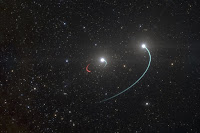Beauty of Space Through NASA & Telescopes

Magnificent Space Images from Global Telescopes Source: NASA Cosmic Delight Through Advanced Technology NASA has released a spectacular display of cosmic images from highly advanced telescopes positioned around the world and in space. This is the universe seen through the prism of the latest technology - gamma rays, radio waves and infrared. The image above is that of the Cartwheel Galaxy. It shows a small galaxy passing through a "bulls-eye" galaxy stretching more than 150,000 light years. It was caught on tape by X-ray imaging from NASA's Chandra X-ray Observatory. Messier 82 ...





